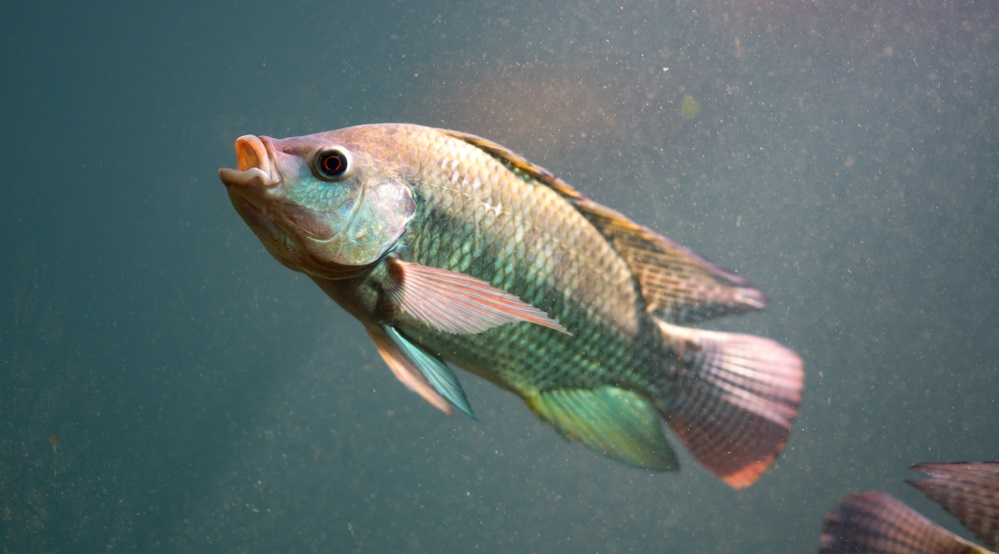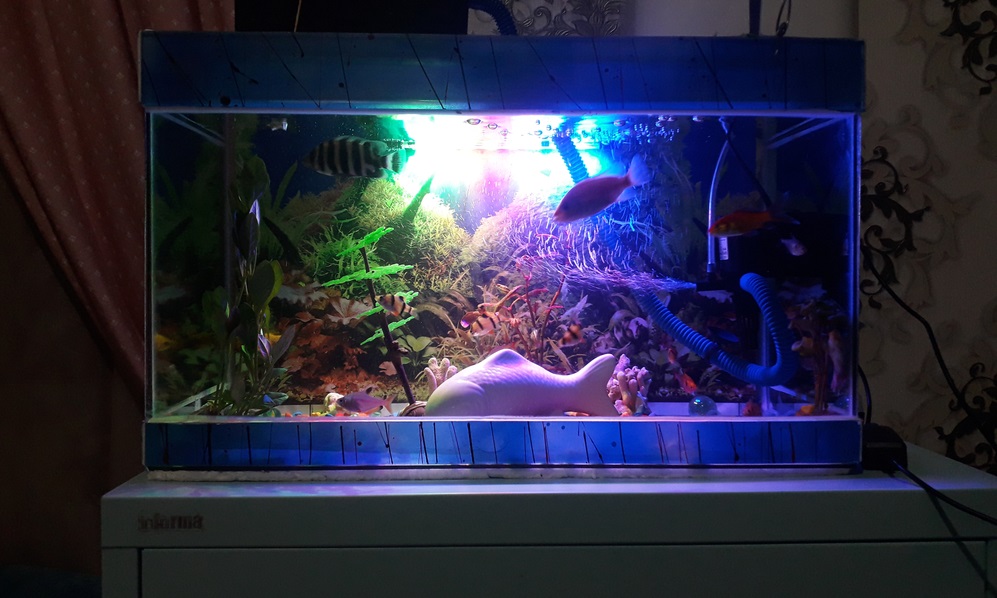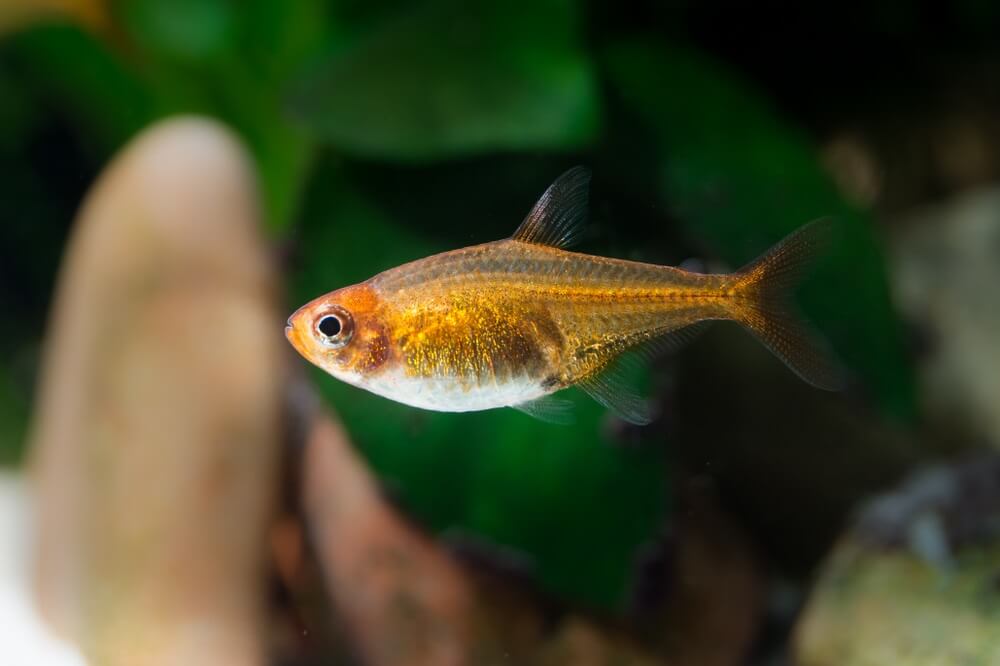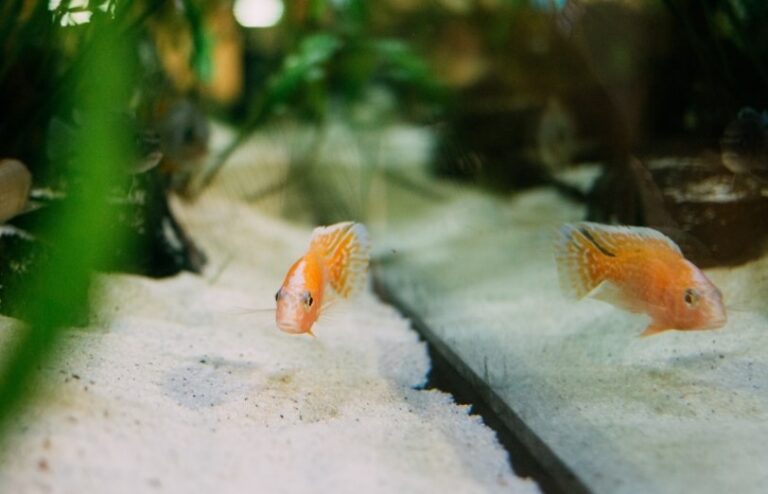The common misconception about aquarium lighting is that its presence is for mere aesthetics only. However, seasoned aquarists know better. A fish tank needs the right lighting to ensure the aquatic life stays healthy and alive. So, why do fishes need light?
An aquarium fish needs light to help them distinguish between day and night. Fish species have circadian rhythms, which they must follow in their natural habitat or inside an aquarium. Imitating the natural light the fish use will make them more at ease inside the tank.
Aside from keeping them healthy, proper lighting has several benefits to the fish, aquarium plants, and the aquarium owner. Read on to better understand the importance of aquarium lights against darkness and how proper lighting is achieved!

Why Do Fishes Need Light?
A fish tank light is crucial in keeping and maintaining fish health and wellness. The main purpose of aquarium lighting is for the fish to differentiate night from day. However, there are several other reasons why do fishes need light.
Prevents Stunted Growth
Without aquarium lights, fish may not develop properly, resulting in stunted growth. Darkness makes fish feel lethargic, lose their appetite, and eventually lose their vigor and contentment.
Enhances Fish Color
LED lighting systems let the fishes show their colors beautifully. Using the right light can beautify your fish more than just natural light. Aside from the color, fish with sufficient light sources appear more alert and active. This will make your fish tank livelier and more exciting to look at.
Maintains Algae Growth
Green algae are considered an asset of a healthy fish tank as long as it is under control. Lighting encourages the growth of algae, which can serve as a dietary source for the fish. But algae bloom, the rapid growth of algae, is a problem. If you notice increased algae production inside the aquarium, consider limiting the aquarium lights and how long you have them on.
Shows Tank Problems Easily
Another advantage of having a decent aquarium light is for you. The light allows the aquarium owner to easily spot problems and issues inside the tank. Therefore, solutions can be done promptly to maintain the healthy ecosystem of the fish and any plant inside it.
Is Natural Light Enough?
Some people ask if natural light is enough for marine life to thrive. The answer is yes. Natural sunlight is okay for your fish if they get sufficient light from windows and doors.
Do not place the aquarium beside a window since direct sunlight can harm the fish. The presence of direct sunlight during extremely hot days can warm the water temperature inside the aquarium. The aquarium water will become uncomfortable for your fish and may give them undue stress. Furthermore, natural and UV lights may trigger rapid algae growth that can become a huge problem if not controlled.
Mixing natural light with artificial light, such as LED lighting, might be a good idea. LED lighting and other aquarium lighting systems can be regulated from your end. You can time the period the light is on and off, as well as set the temperature. In the long run, artificial lights mimicking the sunlight will yield a positive result.
Do Fishes Need Light at Night?

Do fishes need light at night? No, they don’t. Remember that fishes have a circadian rhythm, and aquarium lighting aims to replicate their natural habitat. The night is shrouded in darkness. Hence, there is no need for light at this time of day.
The darkness allows the fish to sleep comfortably and rest. Typically, fishes only need around 8 to 12 hours of light a day. Goldfish, on the other hand, may need around 12 to 13 hours of moderately bright light. This is because they live in areas where they have access to direct sunlight.
To simulate the fish’s natural habitat lighting, you can turn the light on in the morning, then turn it off before going to bed at night. This way, the aquarium fish can follow the natural rhythm of day and night lighting.
Like most aquarium fish, a betta fish also needs to sleep at night. But unlike a betta fish, nocturnal fish species spend the nighttime wide awake. In the cases of these nocturnal ones, you can leave the lights on for a little longer though you still need to shut them off at some point, or you may use a blue light instead.
Blue light is a good alternative for nighttime lighting instead of bright light because they promote calmness. This type of lighting allows the fish to see its surroundings and move around while maintaining a peaceful ambiance without too much glare that can stimulate them. The fishes can still rest even with the lights on.
Best Lighting for a Fish Tank
With many available aquarium lights in the market, you might be wondering which one is best for your fish. Know the types of fish you have and do some research on their lighting needs.
For example, the freshwater fish Mexican tetra does not really need light. Tetras are hardy tropical fish, but what makes Mexican tetra unique is their blindness. This fish is also known as the blind cave fish. Based on its name, it is obvious why it doesn’t need light even if you have the best lighting available.
You can use any type of lighting for your fish, depending on what light they need. Just take note that the best lighting focuses on safety too. You may use artificial lights like LED, fluorescent, or even incandescent ones. However, incandescent lights may result in heat problems that can harm your fish.
Best Light Color for Aquariums
The light color plays a major factor in lighting choices too. Some may opt for a colored light, while some do not.
Most freshwater tanks may use a full spectrum of white light. Though this can be useful for fish, it won’t work well for a planted aquarium. Plant life needs a mixture of red and blue light to thrive. This light mixture allows the plants inside the tank to develop their stems and leaves properly.
For a fish-only aquarium, blue LED lights are considered the top choice. The color blue promotes calmness and also enhances the fish’s color. Blue light works well for nocturnal and diurnal fish. Aesthetically, blue lights are also pleasing to the eye.
If you have a freshwater fish, magenta-colored lights are a good pick. This mimics the sunrise and sunset settings, making the aquarium more natural. It further augments the colors of freshwater fish, particularly their red, green, blue, and pink hues.
Lights with red hues are highly recommended for bottom-dwelling fish such as catfish and plecos. The color red produces a warmer and duller tone, providing comfort for these fish to roam freely. However, always check for algae growth when using red light, as this may hasten algae production.
Lighting and Aquatic Plants
Fishes do not rely too much on artificial lights, unlike aquatic plants. A planted tank must count on the use of artificial lights for them to grow healthily. The combination of red and blue light can do wonders for all aquatic plants.
The plant color becomes more vibrant and appealing when lit with red and blue lights. That is because these colors aid in plant pigmentation. So, if you have a red aquatic plant, it becomes redder due to the nutrients and effects of exposing it to red and blue colored lights.
Effects of Inadequate Aquarium Lighting

A fish can live for three days without any light source. Unfortunately, unlit aquariums are not healthy for any aquatic life. Fish may feel lethargic, won’t eat or fall ill, while plants may not see growth and die.
Too much light is bad, yet too little of it poses dangers too.
First and foremost, the plants will be affected. Since they rely heavily on lighting for growth and photosynthesis, aquarium plants will struggle to be alive. Continuous lack of a good lighting source will eventually lead to plants dying. Their death will result in low oxygen levels, affecting all other tank inhabitants.
Due to decreased oxygen levels, fishes may develop several health issues, such as respiratory problems and labored breathing. Fishes will likely experience stress that can affect their ability to swim properly. Furthermore, they will lose their appetite, and the lack of nutrients entering their bodies may further lead to their demise.
Even if it is a fish-only tank without any plant life, a fish cannot live without – or minimal – lighting. Fishes will lose their vibrant colors if they are not exposed to sufficient lighting. It also affects their movements and concentration since they become less responsive and sluggish. Due to the lack of a proper lighting system, the behavioral, mental and physical aspects of a fish’s life are jeopardized.






